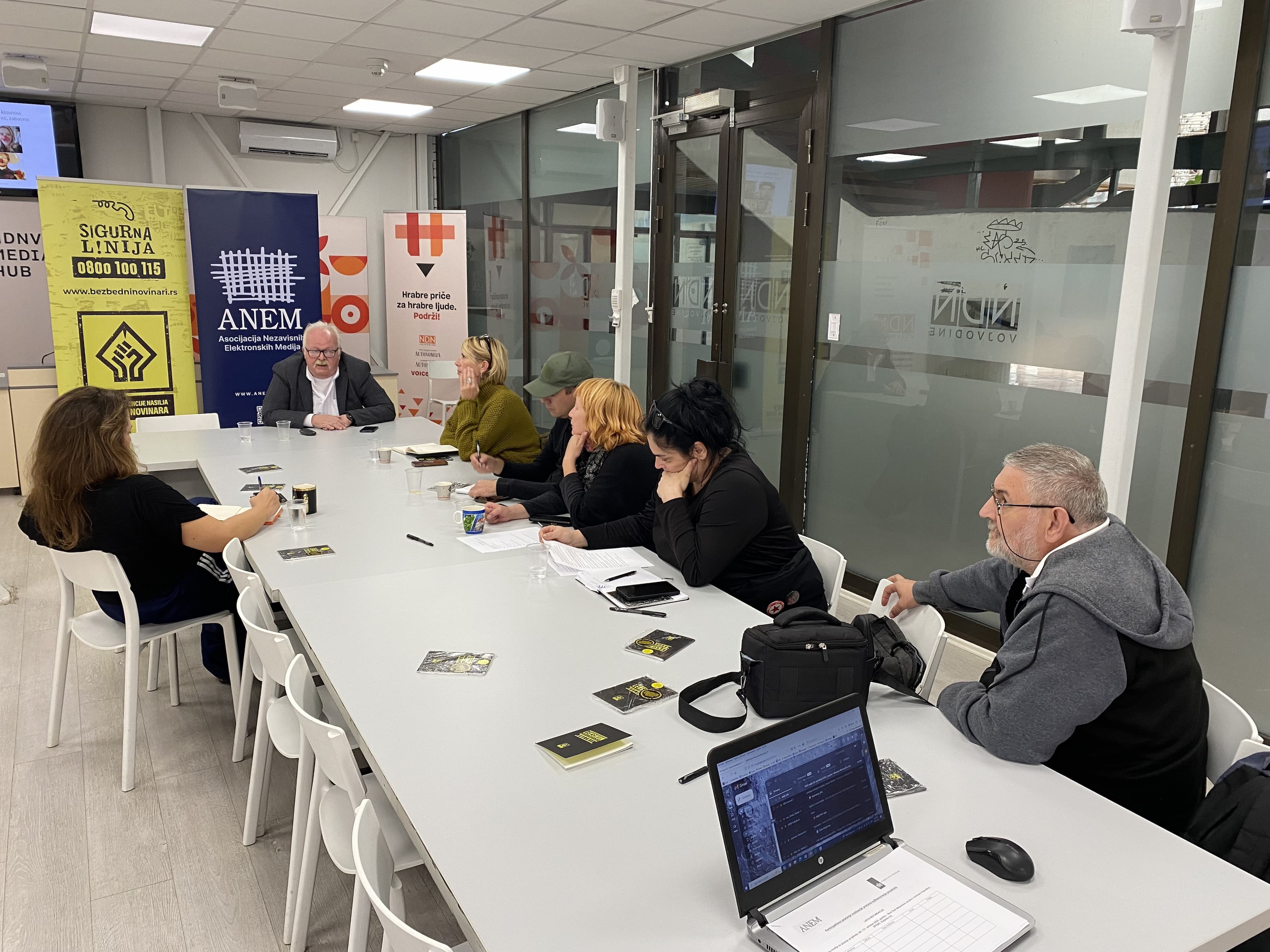Category
Latest News

Training for Writing Media Projects Held in Novi Sad
October 21, 2025

ANEM alarm: Disturbing threatening message to Nenad Kulačin on Facebook.
October 21, 2025

Media participation: Members of the Media Subcommittee of the Survey Commission for Radar
October 21, 2025

One category in question: List of approved candidates for members of the REM Council.
October 21, 2025

Veran Matić Targeted by Velimir Bulatović: Insults and Threats
October 21, 2025







